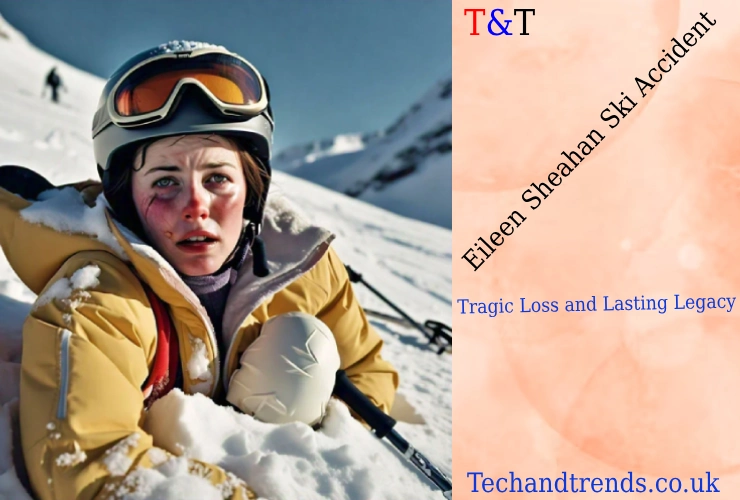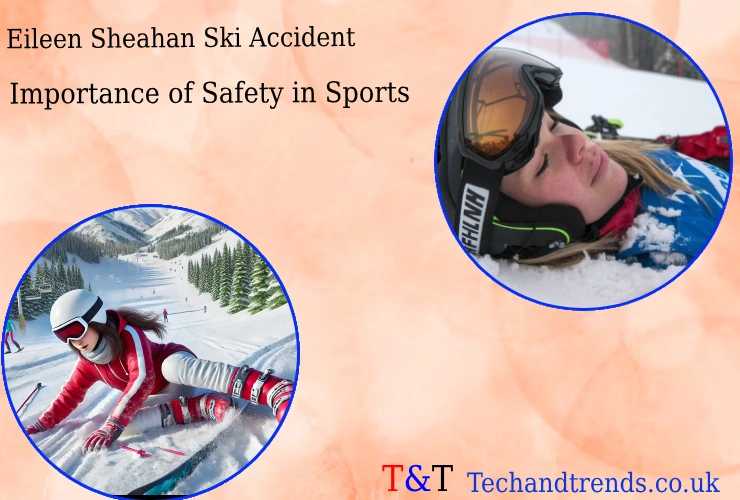Understanding the Risks of Skiing: Lessons from the Eileen Sheahan Ski Accident
Skiing is a thrilling winter sport that combines speed, skill, and the beauty of snow-covered landscapes. However, it is also an activity that carries inherent risks. Tragic incidents like the Eileen Sheahan ski accident remind us of the importance of prioritizing safety on the slopes. In this article, we’ll explore what happened in Eileen Sheahan’s case, discuss common causes of skiing accidents, and provide actionable tips to help skiers stay safe while enjoying this exhilarating sport.
What Happened in the Eileen Sheahan Ski Accident?
The Eileen Sheahan ski accident occurred on January 27, 2024, at Aspen Highlands in Colorado. Eileen, a 22-year-old avid skier, was navigating an intermediate trail called the Exhibition run when she tragically collided with a tree. Despite wearing a helmet and skiing within her skill level, the impact caused fatal injuries. Emergency responders arrived quickly but were unable to save her.
This heartbreaking incident highlights that even experienced skiers are vulnerable to accidents. It serves as a wake-up call for skiers to remain cautious and for ski resorts to continue improving safety measures.
The Importance of Skiing Safety Precautions
Skiing safety precautions are vital for reducing risks and ensuring that skiers can enjoy their time on the slopes without unnecessary danger. Here are some key reasons why safety measures should never be overlooked:
- Prevention of Serious Injuries: Proper precautions can significantly reduce the likelihood of head injuries, fractures, or other severe conditions.
- Confidence on the Slopes: Knowing you’re prepared allows you to ski with greater confidence and focus.
- Protecting Others: Adhering to safety guidelines ensures not only your safety but also that of fellow skiers.
Key Safety Precautions Every Skier Should Follow
- Wear a Helmet: Helmets are essential for protecting against head injuries during falls or collisions.
- Know Your Limits: Avoid trails that exceed your skill level or physical capability.
- Follow Trail Signs: Pay attention to trail markings and warnings about hazards.
- Stay Alert: Be mindful of other skiers, snowboarders, and obstacles around you.
- Take Breaks: Fatigue can impair judgment and reaction times.
Common Causes of Skiing Accidents
Understanding what leads to skiing accidents can help skiers take proactive steps to avoid them. Here are some of the most common causes:
1. Loss of Control
Losing control while skiing downhill is a frequent cause of accidents. This can happen due to poor technique, icy slopes, or excessive speed.
2. Collisions
Collisions with trees, rocks, lift towers, or other skiers are among the leading causes of serious injuries on the slopes. These accidents often occur when skiers fail to maintain a safe distance or misjudge their surroundings.
3. Equipment Malfunctions
Faulty bindings, poorly maintained skis, or improperly adjusted boots can lead to dangerous situations. Regular equipment checks are crucial.
4. Inexperience
Beginners who overestimate their abilities or fail to learn basic techniques are more prone to accidents.
5. Weather Conditions
Sudden changes in weather—such as heavy snowfall or high winds—can create hazardous conditions that increase the risk of accidents.
Essential Gear for Skiing Safety
Having the right gear is one of the most effective ways to stay safe while skiing. Let’s take a closer look at essential equipment every skier should have:
| Gear Item | Purpose |
|---|---|
| Helmet | Protects against head injuries during falls or collisions |
| Goggles | Improves visibility in snowstorms and protects eyes from UV rays |
| Ski Boots | Provides stability and control over skis |
| Skis and Poles | Essential for movement; poles assist with balance |
| Protective Pads | Offers extra protection for knees, elbows, and wrists |
| Layers of Clothing | Keeps you warm while allowing flexibility; moisture-wicking materials help |
Investing in high-quality gear and ensuring it fits properly can make a significant difference in preventing injuries.
How Weather Conditions Impact Skiing
Weather plays a crucial role in skiing safety. Poor conditions can turn an enjoyable day into a dangerous one if skiers aren’t prepared.
1. Reduced Visibility
Fog, snowfall, or blizzards can make it difficult to see obstacles or other skiers on the slopes. This increases the risk of collisions.
2. Icy Slopes
When temperatures fluctuate, snow can melt during the day and freeze overnight, creating icy patches that are challenging to navigate.
3. Avalanche Risks
In backcountry areas, unstable snowpacks can lead to avalanches—a serious threat even for experienced skiers.
How to Adapt to Weather Conditions
- Check weather forecasts before heading out.
- Avoid skiing during severe storms or high winds.
- Stay on groomed trails during poor visibility.
- Carry avalanche safety gear if skiing off-piste (e.g., transceivers, probes).
Tips for Beginners to Avoid Skiing Mishaps
For those new to skiing, taking extra precautions is essential for building skills safely while avoiding unnecessary risks.
1. Take Lessons
Professional instruction is invaluable for learning proper techniques and understanding slope etiquette.
2. Start Small
Beginner-friendly trails (green runs) are designed for learning basic skills without overwhelming challenges.
3. Practice Falling Safely
Learning how to fall correctly—by keeping your limbs close to your body—can reduce injury risk during inevitable tumbles.
4. Stay Hydrated
Dehydration can impair focus and coordination, so drink plenty of water throughout your day on the slopes.
5. Know When to Stop
If you’re tired or feeling unwell, it’s better to call it a day than risk an accident due to fatigue.
The Role of Ski Resorts in Ensuring Safety
Ski resorts play a critical role in creating a safe environment for their visitors by implementing various measures:
1. Clear Trail Signage
Resorts mark trails based on difficulty levels (green for beginners, blue for intermediates, black for experts) and warn about potential hazards like cliffs or icy areas.
2. Regular Maintenance
Lift systems and other infrastructure undergo routine inspections and maintenance to ensure they operate safely.
3. On-Site Medical Assistance
Most resorts have first-aid stations staffed by trained personnel who can respond quickly in case of emergencies.
4. Safety Education Programs
Many resorts offer workshops or informational sessions about slope etiquette and avalanche awareness.
By choosing reputable ski resorts that prioritize safety, skiers can enjoy their experience with greater peace of mind.
Learning from Tragic Skiing Accidents
The tragic loss of Eileen Sheahan has left an indelible mark on her loved ones and the skiing community at large. Such incidents remind us that skiing requires respect for its inherent dangers. By learning from these tragedies, we can take steps toward preventing similar outcomes in the future.
For example:
- Advocating for increased helmet usage across all age groups.
- Encouraging ski resorts to implement stricter safety protocols.
- Promoting awareness about proper skiing techniques and trail etiquette.
Why Skiing Safety Should Be a Priority for All
Whether you’re an experienced skier tackling black diamond runs or a beginner learning the basics on green trails, safety should always be your top priority. Here’s why:
- Accidents Can Happen Anytime: Even seasoned skiers like Eileen Sheahan have fallen victim to tragic accidents.
- Respect Nature’s Power: The mountains are beautiful but unforgiving; staying prepared is essential.
- Enjoyment Without Regret: By prioritizing safety, you ensure that your time on the slopes remains fun rather than ending in injury—or worse.
Final Thoughts
The story of Eileen Sheahan serves as both a cautionary tale and an opportunity for reflection within the skiing community. While skiing is undoubtedly an exciting sport that brings people closer to nature and adventure, it also demands responsibility from everyone involved—skiers, instructors, resort staff, and even manufacturers of ski equipment.
By adhering to safety guidelines, wearing proper gear, respecting weather conditions, and learning from past tragedies like the Eileen Sheahan ski accident, we can work together toward making skiing safer for all participants while preserving its joy and thrill for generations to come!





Comments are closed.